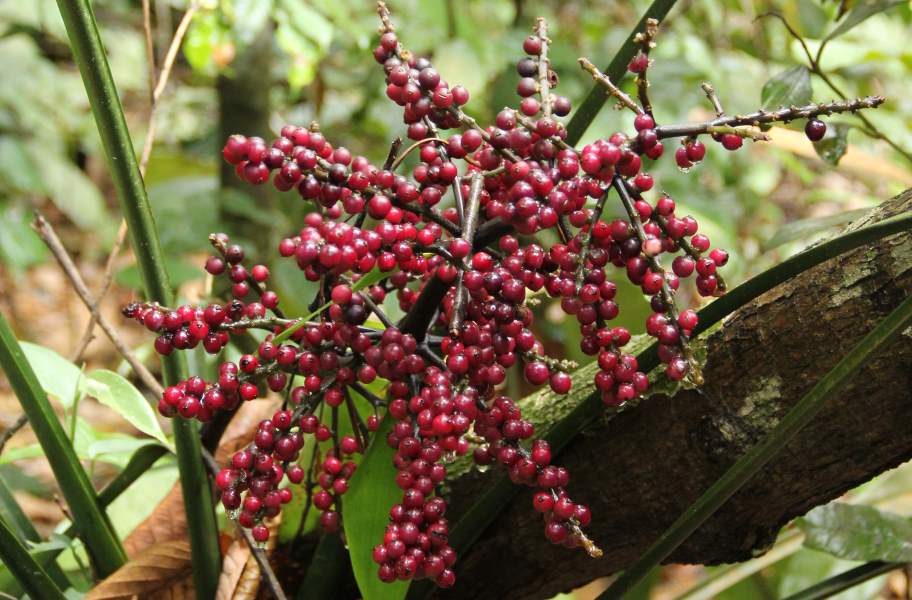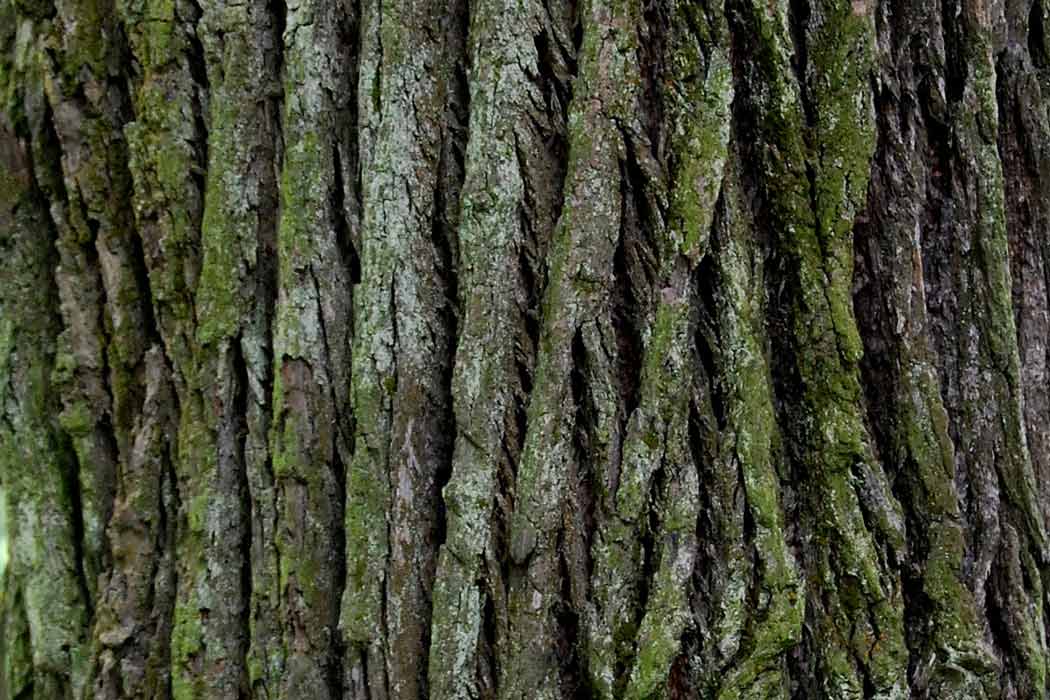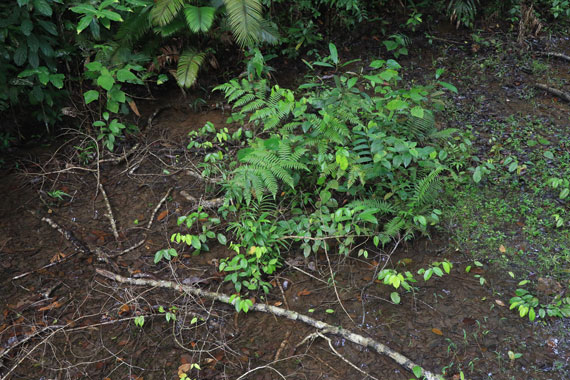News Listing Page

How Colour Changes in Licuala ferruginea Fruits Signal Bird Dispersal Strategy
03 April 2025
A study was conducted by researchers from NParks to understand the correlation between the changing colours of Licuala ferruginea fruits and their fauna seed-dispersers. By monitoring local plant specimens in rainforest and nursery settings, observations suggest that the initial red colour serves as an early advertisement to birds while subsequent pink and white stages aid in camouflaging, allowing the fruit to ripen finally to purple and black. Purple and black colouration are established visual prompts for frugivorous birds, signalling that fruits are ripe to consume. Despite being fed on by a range of mammals, it is postulated that Forest bulbuls are the intended dispersers for Licuala ferruginea due to their gape sizes matching the fruit size. This theory supports the hypothesis of coevolution between fruit traits and disperser morphology and behaviour.

Orchid Renaissance in Singapore’s Urban Jungle
03 March 2025
Singapore’s urban landscape has witnessed a remarkable resurgence in native orchid species. Over the past 15 years, the number of extant native orchids species has increased from 45 to 76, due to taxonomic revisions and new discoveries. This success stems from the establishment of resident taxonomists that embrace integrative taxonomy and comprehensive botanical surveys and field research. The Singapore Botanic Gardens plays a crucial role in orchid conservation, spearheading ex-situ propagation and reintroduction programmes leading to the successful reintroduction of over 60 native orchid species across the city-state. This orchid renaissance demonstrates that urban areas can serve as important refugia for biodiversity, offering hope for conservation in city environments worldwide.

Singapore Red Data Book (3rd edition)
05 February 2025
The third edition of the Singapore Red Data Book updates the status of over 9,400 species in Singapore and provides key baseline data that supports species monitoring and guides local conservation efforts. Jointly produced by NParks, Lee Kong Chian Natural History Museum and the Nature Society (Singapore), notable new plant species include Hanguana rubinea , rediscoveries of species previously thought to be extinct as well as new records of species.

New Method to Detect Defects in Tree Populations
02 January 2025
Researchers from Nanyang Technology University and National Parks Board have developed a non-destructive method to detect tree defects by re-utilising ground-penetrating radar (GPR) for aboveground detection. Existing detection methods, such as sonic or electrical resistivity tomography and even those based on traditional use of GPR, are time-consuming, labour-intensive and can only measure individual trees. Through contactless measurement along a straight path, automated movement of sensor detectors and advanced signal and data processing, this new method was shown to quickly and accurately detect defects in tree populations, facilitating their management in urban settings.

Tolerance of Plants on Slopes against Drought Stress and Re-watering
13 December 2024
A study was conducted by researchers from Nanyang Technological University and NParks to investigate the effects of extreme weather conditions such as prolonged drought stress and continuous rain on plants that commonly grow on slopes in Singapore. It is postulated that these plants could be drought tolerant as it is adapted to a natural habitat where drainage results in less exposure to wet soil conditions. Ipomoea pes-caprae (creeper), Clerodendrum paniculatum and Melastoma malabathricum (shrubs) were subjected to drought stress (DS), then re-watered (RW). The study found that groundcover plants like I.pes-caprae and smaller perennials like C.paniculatum were able to recover after prolonged DS. M. malabathricum did not survive the DS. This suggests that M. malabathricum may not be suitable for planting on slopes due to its susceptibility to DS, which could leave the ground exposed after severe DS.

Exploring Begonias of Sulawesi
01 November 2024
Sulawesi is the 11th largest island in the world and a global priority for conservation. However, this region in Tropical Southeast Asia has been poorly botanically explored. The Begonia species of Sulawesi are a hallmark for conservation for their diversity, attractiveness and considerable horticultural potential. Documenting this charismatic group in Sulawesi is challenged by limited knowledge of its taxonomy, small endemic localities of certain species and inaccessible localities. These hurdles have resulted in poor information on species and their extinction risk. Using remote sensing methods, researchers have been able to estimation the occurrence of many Begonia species of Sulawesi found in small, endemic populations within deteriorating rainforest habitats. A total of 64 species were updated with a conservation status through this study.
